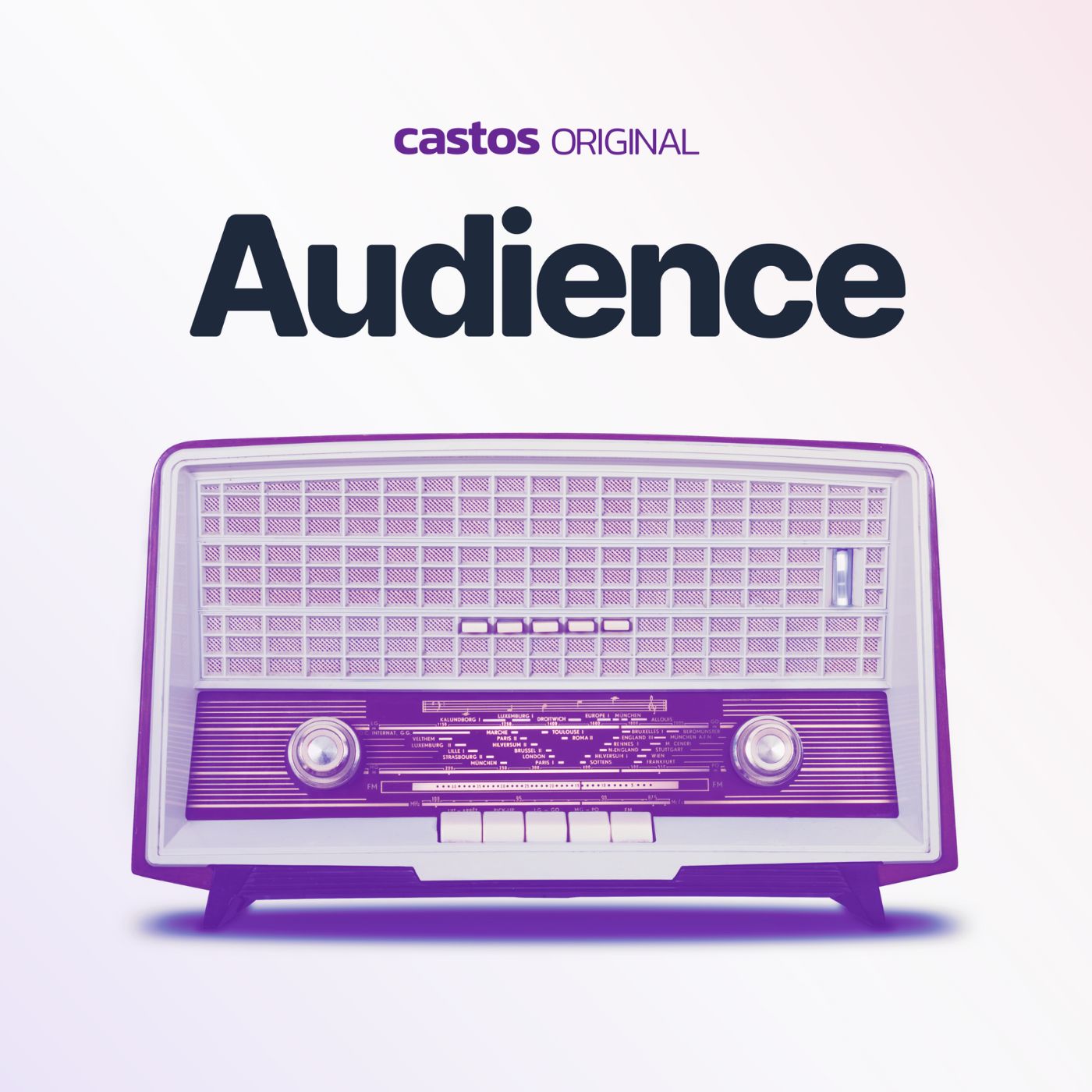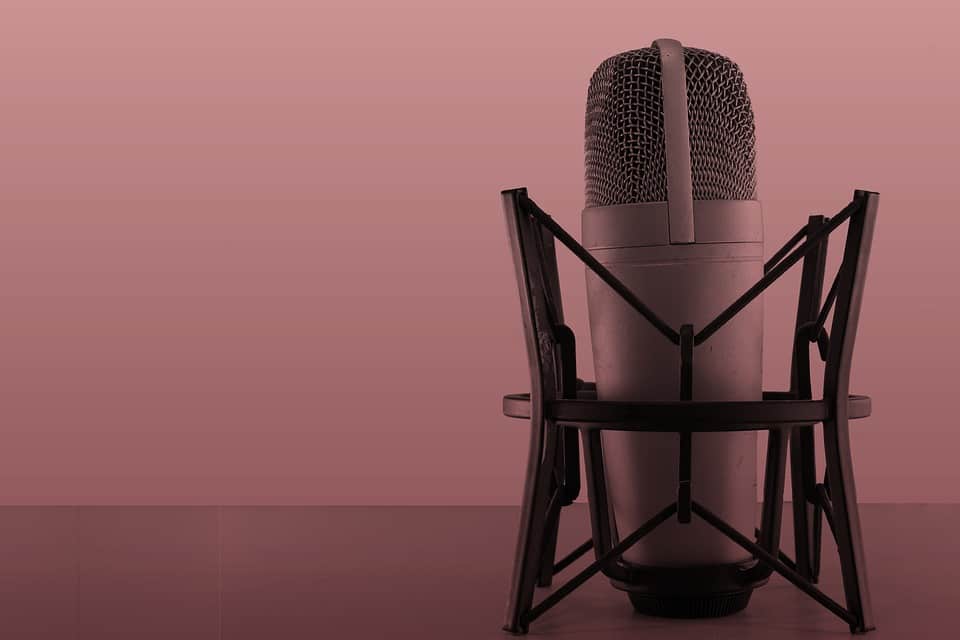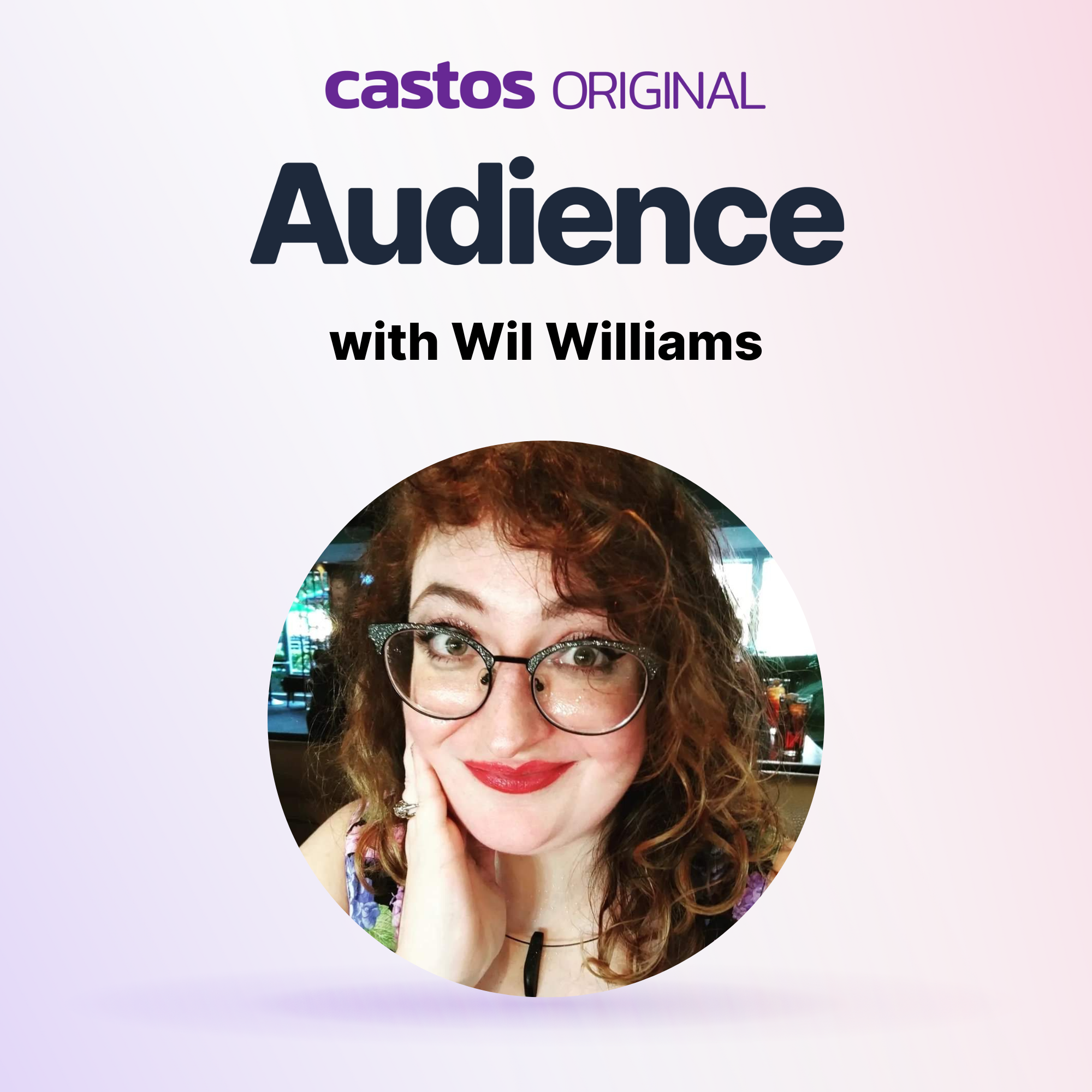Show Notes
You're all set up with your microphone, headphones, and hosting software. You're creating awesome podcast content. People will listen to you because of that, right? Unfortunately, no.
In the past year, podcasters have added 10.5 million new episodes to 150,000 new shows, bringing the total to 700,000 active podcasts with 29 million episodes.
Competition is fierce, and you have your work cut out for you to compete with the best podcasts. But you can do it. And email can help.
There are a few essential email marketing methods you need to get familiar with in order to actually see results. This article will give you a complete, step-by-step guide to how you can ensure your podcast succeeds with an effective email marketing strategy and tactics.
But first, we'll dive into why this channel is important piece to your podcast marketing strategy.
Why Email Marketing?
It's simple. Email marketing works.Between $32 and $44 is made for every $1 spent on email marketing (depending on who you ask).
49% of consumers say they're happy to receive promotional emails from the companies they like at least once a week.
To make matters even better, 73% of millennials say email is their preferred business communication platform, and it's the preferred platform compared to post, social media, texting, or phone calls:
There were 281.1 billion emails sent and received each day in 2018. By 2022, email experts anticipate that number to hit 333.2 billion.
To stand out as a podcaster who effectively drives listeners and customers with email marketing, you have to do it well.
How To Build An Email Marketing Strategy
Email marketing has its own set of tactics and best practices that differentiate it from social media or paid advertising. Building a subscriber bases asks more from the user than just clicking on an ad. Ahead, we've laid out the essential steps to start building your list and effectively marketing your podcast.
Step 1: Build an email list for your podcast
Lead generation, or email list building, is often a full-time job for a marketer who provides professional marketing services.
So you can do it all while creating great podcast content, here are the key elements to generating email subscribers.
Create a lead magnet
A "lead magnet" is a piece of valuable information that you provide to people in exchange for their contact information. In this case, we're looking for their email address.
Here are a few lead magnet best practices:
- If you have existing content related to your podcast subject (blog articles, for instance), compile that content into a single, comprehensive resource.
- Create a lead magnet related to your podcast subject. If you try to promote your entrepreneurship podcast to Justin Bieber fans, you're going to have a bad time.
- Make your lead magnet comprehensive. If you decide to start a blog, it's best practice to promote your lead magnet within your posts. Consider language like "For a complete guide to [subject], check out our new ebook, "[Title]."
If you need to start a new website to house your lead magnet, use one of the top website builders like WordPress, Wix, Squarespace, or Weebly to create a website without having to be a coder or designer.
If you already have a website, you can add a new landing page for your lead magnet using a page builder plug-in.
Next, you'll need a tool which enables you to create lead magnets worth providing an email address for.
Google Slides can be an effective ebook creation tool. The best way to get started is to download an ebook from a publisher you love then put their pages side-by-side to Google Slides, and try to duplicate what you see.
Step 2: Develop custom landing pages for higher conversion rates
Once you have your lead magnet, you need to put it behind an email-gate on an optimized landing page, and then drive traffic to it.
- An email gate is a simple tool which delivers your lead magnet content after people provide the required information (in this case, an email address).
- A landing page is simply that, the optimized page you send people to in order to access your lead magnet content.
Landing pages can be created in-house by your developer, but most podcasters and digital marketers use a landing page builder. These tools create templates that are optimized for conversion.
Some landing page optimizations include:
- A value proposition or unique selling point, which makes it very clear what value your visitors can expect to get from your lead magnet
- A single call-to-action (CTA), which focuses your visitor's attention on your goal (submitting their email address in order to get your lead magnet)
- Limited navigation options, so your visitors don't get distracted by other links
- Visual cues like high-contrast color on the objects you want to draw attention to
- Hidden, or few forms. The example below, for instance, includes a click popup which will only show when the landing page visitor clicks on the CTA button "Book Free Demo."
Examples of optimized landing pages
Here are a couple great examples, which are optimized for conversion that you can draw inspiration from.
Housecall Pro
Housecall Pro is a software provider for plumbers. This landing page is simple and clean, with a clear value proposition and high-contrast CTA.
Clicking the CTA opens up the email-gate/form:
 Housecall Pro popup lead magnet form example.
Housecall Pro popup lead magnet form example.
It's important you only ask for the information you'll need to turn your new contact into a podcast listener (name and email address). More form fields tend to result in fewer conversions.
Lendio
 Lendio's homepage optimized for users to complete a questionnaire.
Lendio's homepage optimized for users to complete a questionnaire.
Lendio, a new business financing tool also keep their landing pages simple. It tells visitors exactly what to expect and has a contrasting CTA button and four-piece benefit-list above-the-fold.
The call to action here sends visitors through to a secondary step, a questionnaire, but this page is focused only on the single objective: viewing loan options.
To do this, you're going to need a good landing page tool. For that, we recommend OptinMonster, Unbounce, or Instapage.
Step 3: Drive traffic to your landing page with social media
Now that you have your lead magnet and landing page, it's time to start driving traffic. The first option to do that is with social media.
No matter your podcast's subject, whether it be a marketing podcast or politics podcast, your prospective listeners (and prospective email subscribers) will be on social media.
But wait, why should I turn social media users into email subscribers? It's a good question, but there's a simple answer:
Email is better than social media at driving listeners to your podcast, and it's not even close.
If you get someone to subscribe to your email list, you'll average a 22% open rate. With social media? You're lucky to have 1% even see your posts when you release a new podcast episode.
Use a social media scheduler and batch out your content to automatically post so you can easily drive social media users to your lead magnets.
Build a Facebook, Instagram, and Pinterest profile for your podcast, then focus on creating awesome posts focused on the value your lead magnet delivers.
Share at least seven posts per lead magnet you create:
- 3 Audiograms/Gifs: Audiograms are static images made into videos/gifs by placing audio and transcriptions over them. Record snapshots of your lead magnet content to create these. Audiograms have shown to generate 5X the traffic than static posts.
- 4 Image Quotes: See below for examples. Consider including people in your images, as this has shown to increase conversions by up to 95%.
Step 4: Drive traffic to your landing page with PPC
If you have a bit of budget and are pushing for a big launch of your new podcast, PPC may be the way to go.
There's no more effective way to drive targeted traffic to your lead magnet and email list than with Facebook Ads or Adwords display ads.
Here's an example from AdEspresso, advertising their new lead magnet:
 AdEspresso advertising their free e-book that requires users enter their email address to receive the content.
AdEspresso advertising their free e-book that requires users enter their email address to receive the content.Through PPC you can funnel in tons of traffic to build your email list and turn them into everyday listeners.
Use Email Marketing To Turn Your Subscribers Into Listeners
You can't just write "Go listen to my podcast" in an email and expect your new list to head straight there.
This section will give you a step-by-step guide to turning the contacts you got with your lead magnet into podcast listeners.
Write better content
The quality of your email content will dictate whether users will regularly open and engage with your messaging. Use the below best practices to write better copy:
- Write for intent: What do your email recipients want to learn? Communicate the value of your podcast at the top of every email.
- Write for your audience: Who is your audience? Are they young professionals, or older management-types? Should your tone be casual with emojis, or professional?
- Use emotion: People respond to emotion far more than neutral language.
- A/B test your subject lines: Nothing has a more significant impact on your email effectiveness than the rate at which your new subscribers are opening your emails. Be sure you're using an email tool which enables subject line A/B testing, and keep track of what works!
Personalize each email
If you ask for the first name of your new email subscribers, use it!
A simple merge tag could have a huge influence on your email's open rates. Let alone the effect on reduced unsubscribe rates, click-rates, and general loyalty to your podcast.
"79% of companies that exceeded their revenue goals also have a documented strategy for personalization."
Always use personalization to your advantage.
Send thank you and welcome emails
With an average open rate of 61.73%, thank you emails are between 400 and 500% more impactful than regular emails.
Welcome emails are even better, with a reported 82% average open rate.
As soon as someone subscribes, send a thank you or welcome email with a call-to-action to subscribe to your podcast.
They may be the only email they ever open from you. Make sure that email prompts them to check out your podcast.
Track your successes and misses
Keep track of what's working in your emails. What types of subject lines drive more listeners, which call to actions garner the best engagement, what images work best?
Here are a few relevant tools to turn email subscribers into listeners:
- Grammarly: Grammarly's "set goals" feature allows you to tell the tool what you're looking to achieve with your email. After setting your goals, copy and paste your emails into Grammarly before you hit send to make sure our copy lines up with your objectives.
- MailTracker: MailTracker by Hunter is a simple and free email tracker for Gmail that lets you find out who opens your emails. Once you've added the extension, your emails are tracked via Gmail. Then once someone opens your email, you can check out the details and assess what emails are working or not.
Use Email Marketing To Turn Podcast Listeners Into Customers
Many may stop here, wanting to focus on getting more listeners to get paid ads or monetize later. If your goal is increased sales in addition to listeners, you'll have to take it a step further.
This section will give you a step-by-step breakdown of how you can use email marketing to turn podcast listeners and email subscribers into customers.
Don't send bad emails
This may seem like common sense, but you'd be surprised.
The first and most important thing to remember when using email marketing for podcasting is to avoid losing subscribers you've worked hard to get.
You can't monetize your email list if your unsubscribe rates are through the roof.
From a tool perspective, it's important to choose a provider with high, and consistent email deliverability.
Here's an example of a good podcast email from Hotjar:
What's good in this email? Let's break it down:
- The quote at the top of this email is an example of pure emotion. There's no way to more effectively grab your email subscribers than with emotion.
- The high-contrast pink draws the eye very effectively to both links to the podcast. And having two links is also best practice.
- Though it's not shown (as this is an example taken directly from Hotjar's email marketing tool), the space before the comma at the top shows us there would normally be a first name merge tag there. Personalization is crucial to continued engagement from your contacts.
- Starting with a question. Questions are fantastic hooks, as they inspire people to keep reading - either to see if the question is answered or (having answered it themselves) to see if they got it right.
Reward subscribers with discounts
You could choose to make your subscribers automatic premium members, or prompt them to pay to access your premium podcast content.
Either way, keep your subscribers loyal with additional value exclusive to them. And don't beat around the bush when you talk about the offer's exclusivity.
Exclusivity is part of a psychological phenomenon called the scarcity principle, which states that the rarer something is, the more valuable it is (even if there's no real additional value).
Use the P.S.
If the main call to action in your emails is to listen to your podcasts, your second should be to complete some kind of purchase or advance down your business' sales funnel.
And that call to action should go in the P.S. of your email.
There's something called the Zeigarnik effect, which says that humans have a desire to complete tasks. Uncompleted tasks (like not reading the P.S. in an email) creates tension.
In short, people pay close attention to the P.S. in your emails, so make sure they see the value of making a purchase.
Relevant tools to turn podcast listeners into customers
You're going to need a good email tool, either to send single emails or to automate once you get too many for individual emails to be scalable.
Here are the top two email marketing software options.
Mailchimp
Mailchimp is the premier email marketing option for early-stage business owners and entrepreneurs.
They offer beautiful email templates and simple automation, alongside a free plan for up to 2000 email subscribers.
Hubspot
Hubspot is described in Intercom's ultimate marketing stack as "As a low-cost (and in some cases free) platform, it's particularly popular with small businesses who can’t afford the wealth of software options that more mature companies can." - Intercom
Hubspot offers offer a wide variety of plans that give their customers everything from basic email and CRM integrations all the way to enterprise-level marketing automation.
Conclusion
Email marketing can be the difference between a successful podcast and a flop. Use multiple channels to generate more traffic and convert them via lead magnets.
Then, craft compelling, personalized emails to ensure your podcasts get the attention they deserve.










